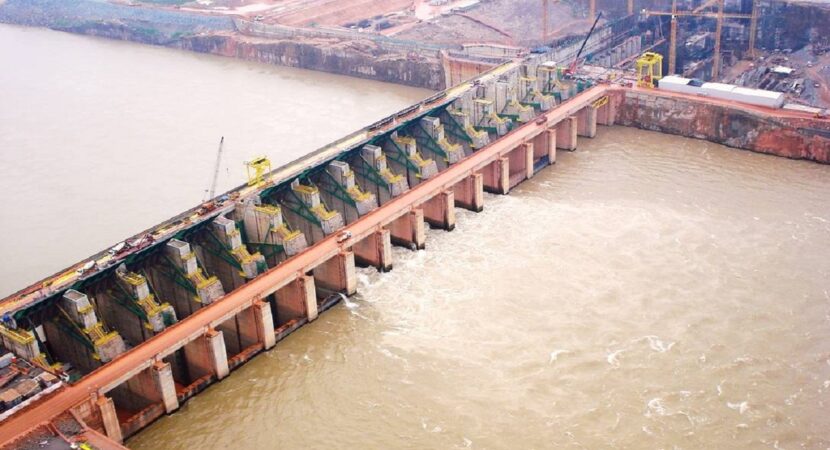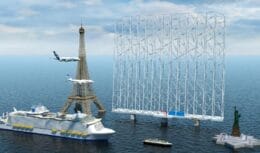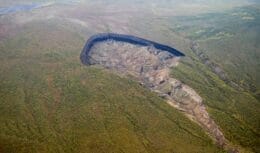
With the analysis of the current situation of water waste and little energy generation, ONS and Aneel reached a conclusion, however MME did not agree with the final analysis of the state-owned companies
According to information from the newspaper O Globo, the hydroelectric power plants of Belo Monte/PA, Tucuruí/PA and Sobradinho/BA are throwing away all the water that they cannot drain to produce electricity within their full capacity. This is happening due to the fact that the National Electric System Operator – ONS keeps the thermoelectric plants in operation, even with the recovery of part of the reservoirs. The Porto Sergipe thermoelectric plant is one of those that take the space of hydroelectric plants within the transmission lines that are responsible for bringing energy from the Northeast to the Center-South of Brazil.
Read also
Study reveals that large investment needs to be made in transmission projects by 2030
The Porto Sergipe thermoelectric plant was inaugurated in August 2020, by the President of the Republic, Jair Bolsonaro. It uses 100% imported gas, with a daily cost of R$ 12,6 million, which is paid by all consumers. However, in Sergipe there is one of the largest pre-salt reserves ever discovered, with the possibility of a flow of up to 20 million cubic meters per day of natural gas.
The ONS sent a document to the National Electric Energy Agency – Aneel, on January 13 of this year, informing the need to reduce the energy generation process by the Porto Sergipe thermoelectric plant, precisely because of the daily quota consumed.
According to a study carried out by the Energy Research Company (EPE), Brazil would need, at the very least, to make a large investment of R$ 18,2 billion in transmission projects by the year 2030. The state-owned company reported that they are At least 6.600 km of transmission lines and 4 new substations are needed by 2030.
Aneel's response to the document sent by the ONS on the Porto Sergipe thermoelectric power plant
In response to the document sent by the ONS, Aneel replied that it agreed with the assessment made by the operator. Thus, the Porto Sergipe thermoelectric plant will have its power generation reduced from 1.515,64 MW to 1.030 MW (-32%) until March 4, 2022.
Last Tuesday (25), Aneel asked the ONS to reduce energy generation by thermoelectric plants, due to the great waste of water without energy production.
In the document, in an analysis carried out by the agency's technicians, it was concluded that there is a type of competition of hydraulic generation with the thermoelectric dispatch that is anticipated. Aneel made it clear that it defends the reduction of energy generation from the thermoelectric plant in order to reduce the impact on consumers and also on nature.
Note issued by the MME
Contrary to the analysis made by ONS and Aneel, the press office of the Ministry of Mines and Energy (MME) stated that the information that hydroelectric plants are throwing water away is not real.
In addition, the note issued by the MME reports that the portfolio and institutions of the electricity sector are seeking to guarantee the total security of the electricity supply in Brazil, with the lowest possible costs, always taking into account the most up-to-date scenario and operating conditions.
ONS response
The National Electric System Operator said in a note, this Tuesday, that, on January 13, 2022, it sent a letter to the National Electric Energy Agency formalizing that it had been negotiating with the Porto de Sergipe thermoelectric plant since the beginning of January , to make it possible to reduce the dispatch of that plant, in view of the favorable inflows that were being observed in the hydrographic basins located in the North and Northeast regions.
“It is worth noting that the Porto de Sergipe thermoelectric plant uses Liquefied Natural Gas (LNG), whose dispatch is defined 60 days in advance. Therefore, it is not possible to immediately reduce the dispatch, as the purchase of fuel is made in advance. For this reason, the ONS started negotiations, aiming to find a way to reduce the generation of UTE Porto de Sergipe resulting in cost reduction for the Brazilian consumer”, says the note.












Air Force F-16 fighters…
True friend, what they shot down were…
Air Force F-16 fighters…
I would like to know what planet you live on…
Air Force F-16 fighters…
Which genocide are you talking about? Than…
Air Force F-16 fighters…
Everything is fine, 100-year secrecy,…
Air Force F-16 fighters…
Well... It's flying scrap... Typical...
I am interested in working in Europe
The infamous belt bathed in…
Good afternoon. I am a logistics technician, I have…
The one who wants to do the writing now…
I have a Fiat road. An excellent car.…
I am an elevator technician assistant, I would like to…
I am interested.
Thank God the niobió is being…